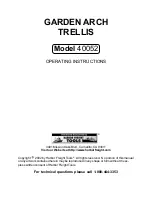
Theoretical basics
72/92
section situated exactly between both Tensiometers (and therefore
exactly at column centre) is
A
t
V
q
i
i
i
½
.
i
V
is the water loss in cm³ determined by weight changes,
is
the interval between two evaluation points, and
the cross section
area (in cm²) of the column.
i
t
A
The data for the hydraulic conductivity function are determined by
inverting the Darcy-Equation:
.
1
/
)
(
z
h
q
h
K
i
i
i
i
i
i
i
i
i
h
h
h
h
h
2
1
1
2
1
1
¼
is the medial water tension between two
evaluation points, with
i
K
as the related hydraulic conductivity (in
cm h
-1
).
)
(
)
(
½
1
2
1
1
1
2
i
i
i
i
i
h
h
h
h
h
is the medial difference of the water
tension between both Tensiometers, whereas
1
2
z
z
z
is the
distance between both Tensiometers (in cm).
Unreliable
data sets close to saturation are filtered depending
to the measuring accuracy of the Tensiometers.
)
(
h
K
To get a sufficient number of data points for the hydraulic function
even with relatively long intervals, both the tension curve and the
weight curve between two evaluation points are interpolated with
hermitian splines (Peters and Durner, 2008). On this basis relatively
short evaluation intervals are achieved.
9.3 Retention and conductivity functions
Normally hydraulic characteristics are described by parametric
functions for
)
(
h
and
.
)
(
h
K
With HYPROP three models can be chosen. These models can be
adapted to measure data via a robust and non-linear optimizing
procedure.
















































